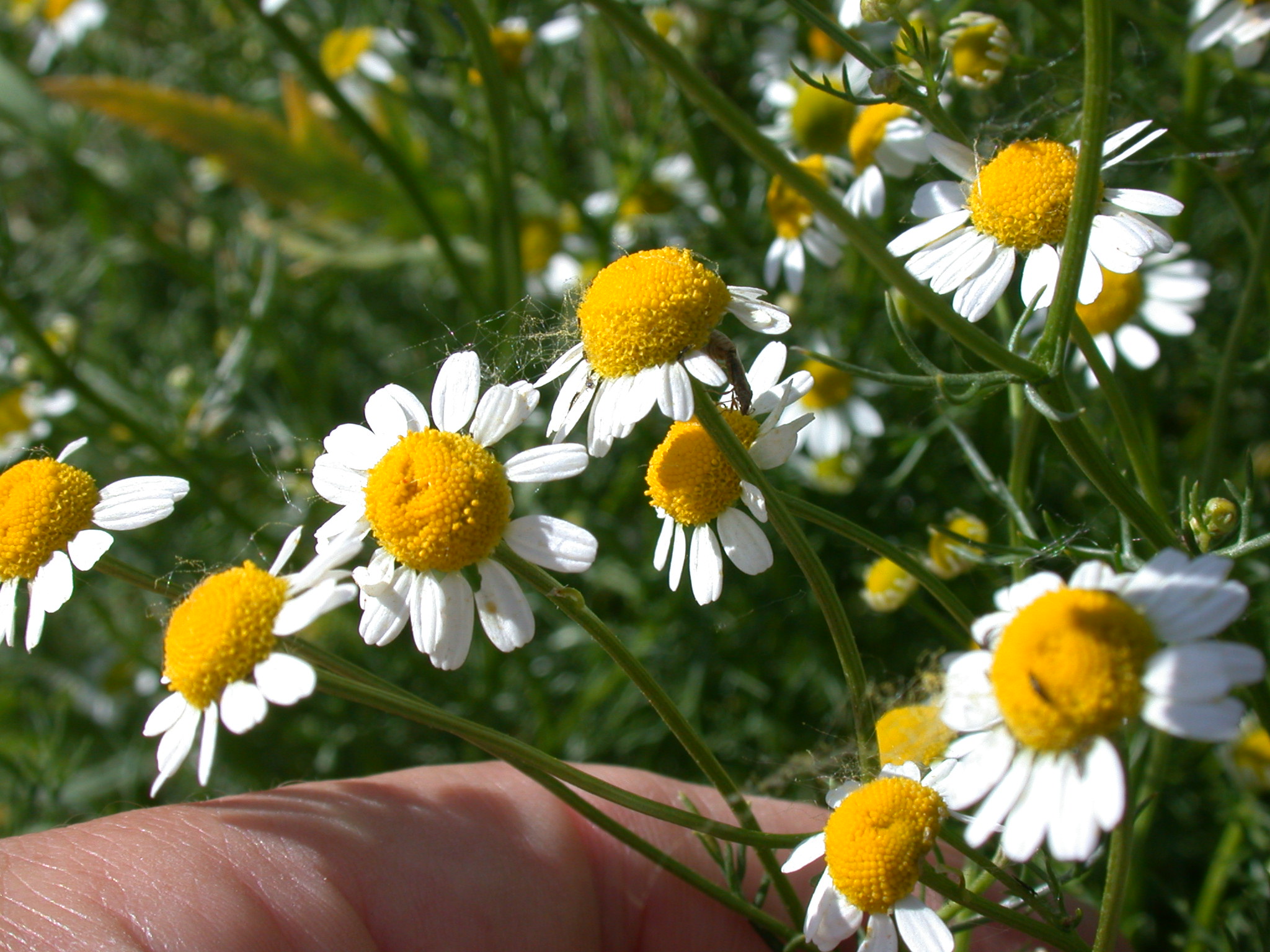Matricaria recutita L. - Chamomile
Synonymous Latin names are: Chamomilla recutita (L.) Rausch. and Matricaria chamomilla L. Matricaria recutita is an annual, herbaceous plant in Asteraceae family/ Asteroideae subfamily, often cultivated as biennial (Th-TH). Chamomile has taproot and branched, erect and smooth stem, which grows to a height of 5–80 cm. The leaves are alteranate, long, narrow, bi- or tripinnate. The flowers are borne in terminal, compound flower heads from the end of April to midsummer. The ray florets are white, while the disc florets are yellow. The flower head is 1.5-3.0 cm wide and has a strong, aromatic scent. The receptacle is hollow and swollen. This morphological feature distinguishes chamomile from the valueless Anthemis species. Fruits are 1-1.5 mm long greyish-white achenes, thousand seed weight: 0.02-0.03 g.
Chamomile originates from the Eastern part of Mediterranean Sea, but distributed worldwide on moderate climate as a weed. It is also common in Hungary, mostly on the saline areas of Alföld. Chamomile needs sunlight, even during germination, and prefers high temperature. The frost-tolerance of the species is high at leaf rosette phase.
The dried flowers (Matricariae flos), the essential oil (Matricariae aetheroleum) and the alcoholic extract of the flowers (Matricariae extractum fluidum) are the drugs of chamomile. The oil can be distilled from the dried or fresh flowers and floral stems. The sifted flowers are also known as Chamomillae cribratum. The drugs are mentioned by Ph. Hg. VIII., ESCOP-, E- and WHO-monographs. Matricariae flos prescribed to contain 4 ml/kg blue essential oil and 0.25 % apigenine-7-glycoside, while Matricariae aetheroleum at least 5 % chamazulene and 15 % alfa-bisabolol.
Chamomile flowers contain 0.4-1.2% essential oil. The blue colour of the oil is caused by the chamazulene content, which compound is forming during the distillation. Further important volatile compounds are: alfa bisabolol and its oxides, bisabolol oxide A and B, beta farnesene. The flower also accumulate fllavonoids (0.3-3.0 %), like apigenin, luteoline, patuletin, pectins (3-17 %), coumarins, phenolic acids, colin and minerals.
Antispasmolytic, analgesic, anti-inflammatory, antibacterial, antifungal, wound healing effects of chamomile are improved. Internally the plant is used for curing the inflammation of gaster and inner epithels, or ulcers. Inhalation with the infusion is also efficient against bronchial problems. Sedative, carminative, digestive effects are also known. Internally, it is applied for healing inflamed eyes, gums and wounds.


